- Home
- entertainment
- news
- The 12 biggest differences between the first 'Game of Thrones' pilot and the final version fans saw
The 12 biggest differences between the first 'Game of Thrones' pilot and the final version fans saw
Kim Renfro

- "Game of Thrones" famously got off to a rocky start with the first attempt at a pilot episode.
- The cocreators changed some major details from their failed pilot to the final version for HBO.
- We broke down the differences by comparing the script for the scrapped pilot and the aired episode.
A new director came in to reshoot the pilot after the cocreators realized there was a "massive problem" with the first version.
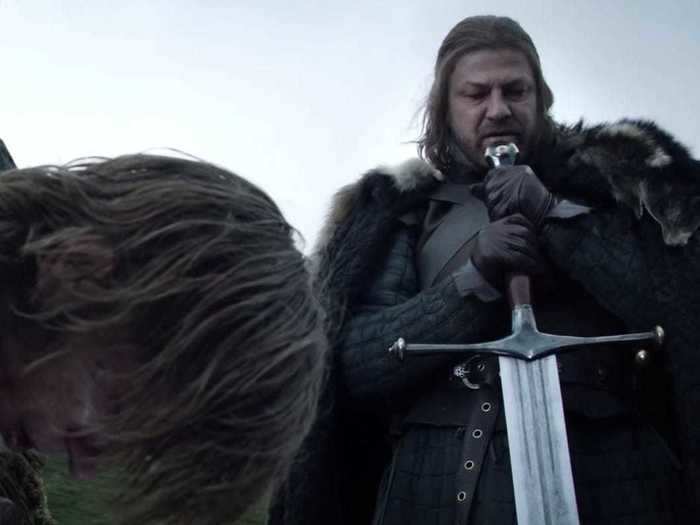
If you're out of the loop on what went wrong with the first pilot, you can read a deep dive on its creation here. But the bottom was that cocreators David Benioff and D.B. Weiss recieved a lot of key feedback after the first pilot episode was filmed, and then went back to the drawing board.
For the first version of the pilot, Benioff and Weiss had hired director Tom McCarthy (who helmed Peter Dinklage's breakout film "The Station Agent") to be behind the camera.
McCarthy said he had "very little" impact on the look and feel of the pilot, and by the time Benioff and Weiss realized they needed to reshoot the bulk of it, McCarthy was busy with another project and unable to return for another run.
"I couldn't do it. And I just didn't feel connected to it," McCarthy told the AV Club in a 2011 interview. "It wasn't a big decision. It felt right."
And so McCarthy walked away, and Timothy Van Patten took over for reshoots of the pilot, and also directed the second episode of the debut season.
Daenerys Targaryen was recast, and Emilia Clarke replaced Tamzin Merchant.
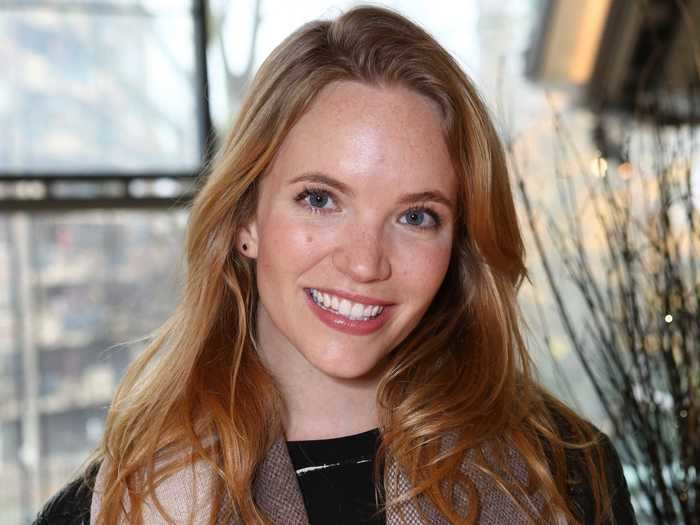
The now-famous Emilia Clarke stepped in for "Pride & Prejudice" and "The Tudors" actress Tamzin Merchant.
Until 2021, the reason for Merchant's departure was pure speculation. But she revealed a piece of the puzzle in an interview with Entertainment Weekly's James Hibberd.
"I didn't have any training as an actor. I only have my instincts," Merchant said. "And what excites me and what drives me is a compelling story and a compelling character. So for me, 'Game of Thrones' was never that."
Though Merchant didn't specify whether she was ultimately the one who asked to be removed from the show, or if that was a decision from HBO's creative team, the actress says she did try to "back out" of the contract before she filmed any scenes.
"I tried to back out of that situation and, during the contract process, I did back out," Merchant said. "I was talked back into it by some persuasive people. Then I found myself naked and afraid in Morocco and riding a horse that was clearly much more excited to be there than I was."
All of Catelyn Stark's scenes were reshot with new actress Michelle Fairley instead of Jennifer Ehle.
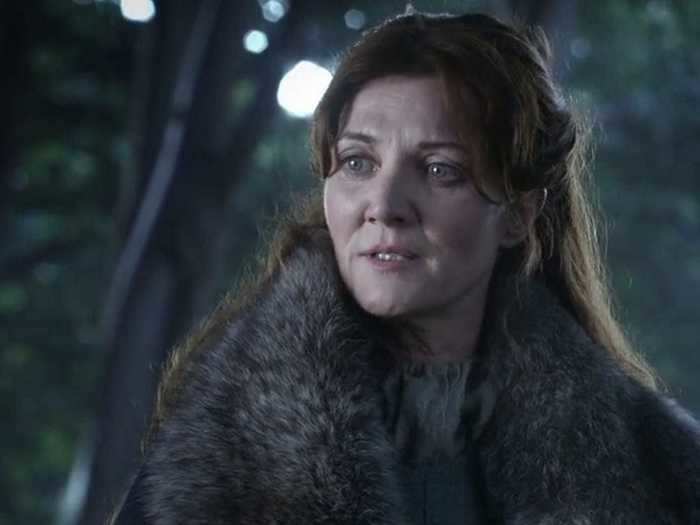
Ehle had decided to leave the project after reconsidering the lengthy time commitment.
Another minor character, Ser Waymar Royce, was also recast.
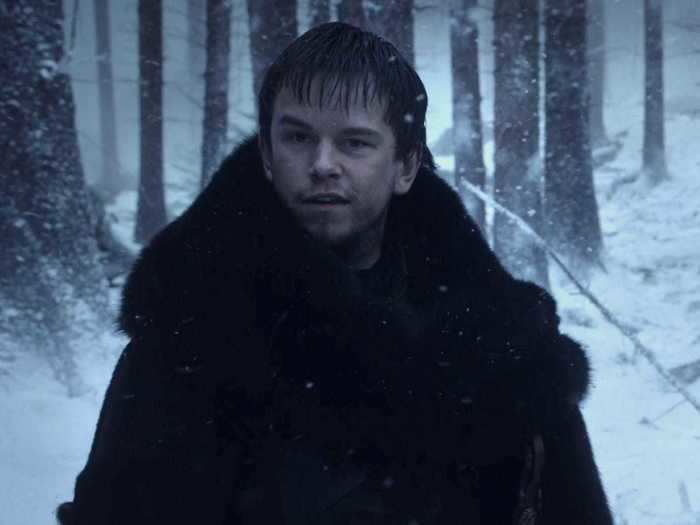
Ser Waymar Royce is the lordling in charge of the Night's Watch ranging mission that opens the entire series. His character changed actors between pilot reshoots, from Jamie Campbell Bower to Rob Ostlere.
"David and Dan and HBO have decided to reshoot the prologue sequence from the pilot," Martin wrote on his blog in 2010. "For the very best of reasons, I think: to make it better. I've seen the pilot, or at least a rough cut thereof, and I thought the prologue sequence was quite good, actually. But this will be the opening scene of the entire series, the first introduction to the world of Westeros for millions of viewers, so 'quite good' was not good enough. We want to make it great."
Bower had landed a role on the Starz "Camelot" series by the time HBO needed to do reshoots, so Ostlere got the part instead.
Nearly a decade later, "Camelot" was long gone and HBO had made new casting announcements for the first "Game of Thrones" prequel series. One of the actors who landed a part was none other than Jamie Campbell Bower.
Unfortunately, that pilot was scrapped less than a year later, meaning Bower's chance at appearing in Westeros was once again lost to fate.
In addition to recastings, Benioff and Weiss reworked almost the entire pilot script, including the opening scene.
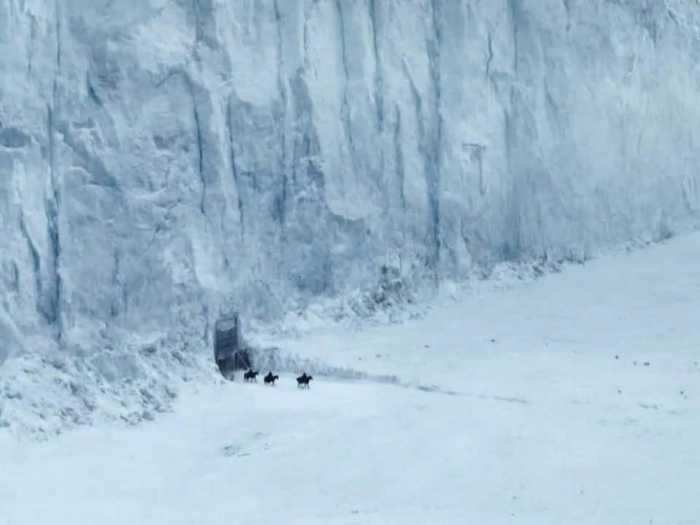
We know the details of what changed between versions of the episode thanks to the Shavelson-Webb Library, where both a version of the original script from Benioff and Weiss and a new version (penned in 2010) are available for public perusal.
In broad strokes, the original pilot script pulls swaths of George R. R. Martin's first chapters of "A Game of Thrones" onto its pages, often word for word.
But the new version is a clear concession on Benioff and Weiss's behalf that some things don't translate straight from page to screen. They realized they needed to spoonfeed information to the audience and better explain the relationships between all of the characters and locations.
The original pilot opens precisely as Martin's first prologue chapter does, with three Night's Watch rangers (Ser Waymar Royce, Gared, and Will) beyond the Wall and already in the middle of tracking wildlings. However, the aired pilot begins with our three doomed rangers crossing beneath the Wall and beginning their journey north.
By showing Castle Black and the Wall right away, the cold open is given a better sense of location.
In the new pilot, Benioff and Weiss were more deliberate about introducing the White Walkers.
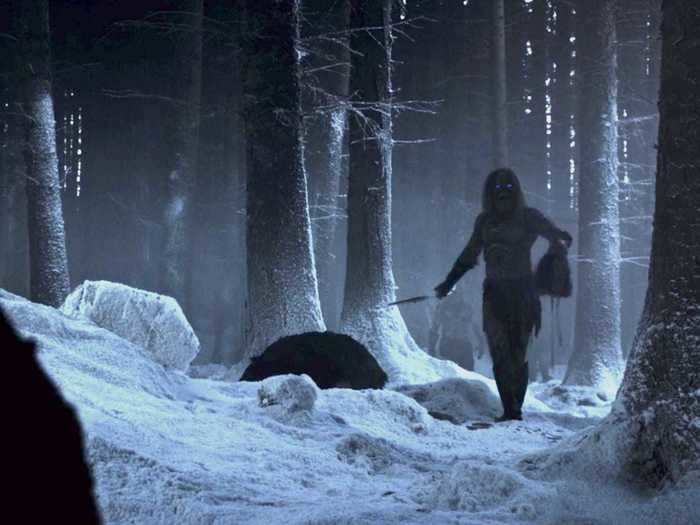
Another change came with the description of Will's discovery of the wildling corpses and the White Walkers themselves, referred to as "Others" in the first script but White Walkers in the final version. (Martin uses these terms interchangeably in the books.)
When Will sees the corpses in the final pilot, their bodies are mangled and arranged in a pattern, something Benioff and Weiss invented for the show. Their script indicates that this was a "witchy mandala" designed to send a message and show that the White Walkers were not mindless creatures. The change allows for Benioff and Weiss to establish that the White Walkers are sentient beings with a culture and purpose.
And both versions of the script make it clear that the White Walkers speak a language humans cannot understand. Again, this is something Martin alludes to in his books when the Other speaks and Will thinks the voice sounds "like the cracking of ice on a winter lake."
The opening sequence was also changed.
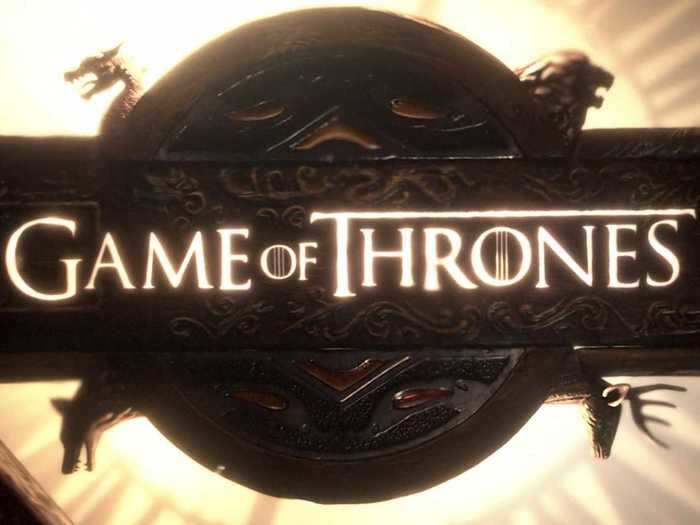
The first attempt at a pilot had a different opening credits sequence than the one we've come to know and love. Benioff and Weiss originally used a raven flying with a message as the opening, showing the bird soaring over various locations.
For the final pilot, Benioff and Weiss hired Angus Wall at the Santa Monica design firm Elastic to create the new opening credits sequence.
Wall took this early idea of a raven flying over the various spotlight locations and re-imagined it as a digital camera's perspective with machinelike, da Vinci–esque inspirations. This is where we get the cogs of castles and sigils and the final shot of the astrolabe rotating around the sun with engravings that show the battle for the throne between the stag (Baratheon), lion (Lannister), wolf (Stark), and dragon (Targaryen).
By putting the map into an inverted sphere shape, the Elastic team was also helping Benioff and Weiss solve their challenge of properly establishing the geography of Westeros and Essos.
The writers went back and added more exposition to the dialogue, which helped the audience understand who was related to who.
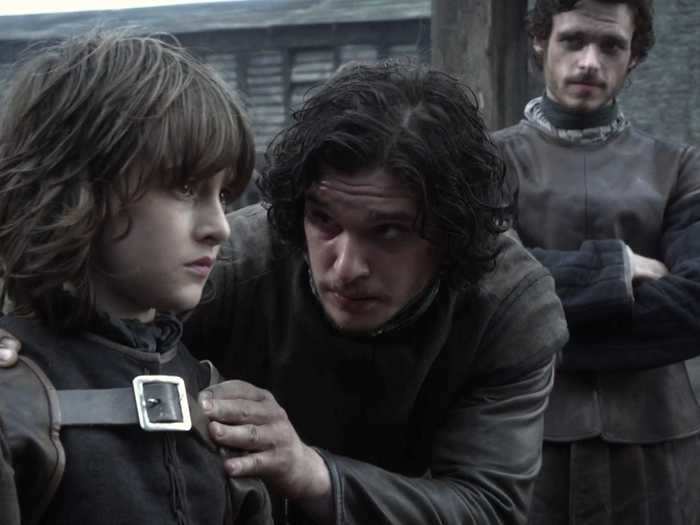
The small tweaks only increase from there. Many of the changes are centered around Benioff and Weiss making more room for expository dialogue, like adding in Ser Waymar Royce telling Will he'd be executed "as a deserter" if he abandons his post.
This happens again with the inclusion of a new opening Winterfell scene with Jon telling Bran that their father is watching the boys train, but specifically saying "and your mother" in order to tell audiences about Jon's bastardship.
Another obvious example of this spoon-feeding can be seen in the changes made to Cersei and Jaime's first scene together in the throne room.

Benioff and Weiss rearranged this whole section to better establish the Lannisters' rivalry with the Starks, with Jon Arryn's death being the inciting event that will bring the two families in closer proximity. Here we get more pointed dialogue that tells the audience about Cersei and Jaime's sibling relationship, as well as her marriage to King Robert.
The scene kicks off with a not-so-subtle line from Jaime as he walks up to Cersei and begins with: "As your brother..."
Benioff and Weiss's writer friends (who had reviewed the first try at a pilot) had completely missed the sibling link between Cersei and Jaime for the first go-around, so they changed this scene's dialogue to make it extra clear that Cersei was married to the king, Jaime was her brother, and the two siblings had a secret big enough to get themselves killed if King Robert ever found out.
Some scenes from the original pilot did make it into the show, like a scene where a raven flies toward Winterfell.

The copy of the 2010 script at the Writers Guild Foundation library has sections underlined by Benioff and Weiss to indicate where they planned on using old footage.
The first of these recycled scenes comes nearly twenty-two minutes into the aired pilot, where we see a raven flying toward Winterfell with a scroll tied to its leg.
Fun fact: In this scene, composer Ramin Djawadi used Littlefinger's theme music. The raven was carrying news of Jon Arryn's death — a murder orchestrated by Littlefinger. The use of Littlefinger's music was a nifty piece of foreshadowing since show-only fans wouldn't even meet his character until later in season one, nor learn of his involvement in Jon Arryn's death until season four.
The brief scene of Bran Stark on the rooftops of Winterfell is also saved from the original pilot.
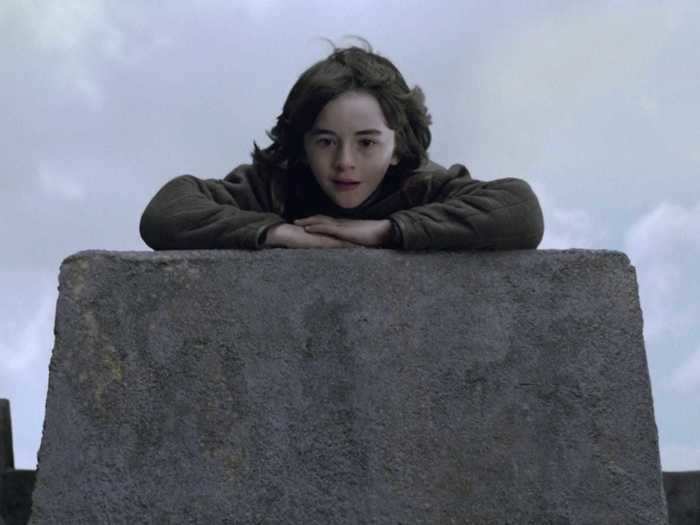
The second snippet of footage Benioff and Weiss managed to rescue from the first pilot is the shot of Bran climbing the walls of Winterfell and watching the king's party approaching the castle.
Once the travelers enter the Winterfell courtyard, we get another bout of added exposition in the final pilot version when Arya tells Sansa, "That's Jaime Lannister, the queen's twin brother!" as he takes off his helmet and looks around, and then later in the scene, she asks Sansa "Where's the Imp?" as a way for the episode to lead into Tyrion Lannister's introduction.
Tyrion's hair was much more blonde in the first pilot, and you can see that first wig in this scene:
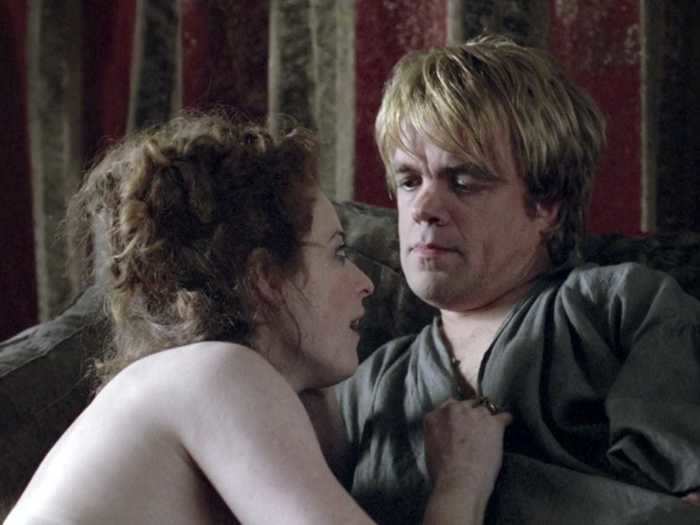
Tyrion's R-rated brothel scene features the sex worker named Ros, played by Esmé Bianco. Nearly ten years later, Bianco carries an earned pride for having one of the only scenes that wasn't axed after the first pilot's filming.
"I was originally just called 'the red-headed whore,'" Bianco said during a spotlight panel at the second annual Con of Thrones in 2018. "I didn't have a name at that point. And I was only meant to do this one scene with [Tyrion] ... and they reshot almost the entire pilot with the exception of my scene with Peter [Dinklage]."
You'll notice how Tyrion's hair is very blond and straight in this entire scene. In the books his hair is described as so blond "it seemed white," and so Benioff and Weiss tried out a wig on Peter Dinklage for the first version of the pilot.
But by the final version, his natural hair was back. You can see his hair change back and forth within the pilot.
There were also some rescued scenes between Ned, Robert, and Benjen. You can tell they're from the original pilot because Sean Bean's hair looks a bit different.
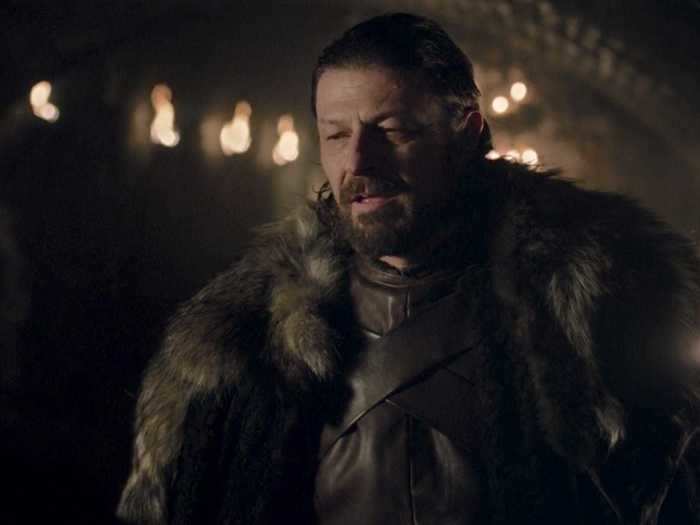
The other scenes saved from the first version of the pilot include Ned and Robert's conversations in the crypts. Sean Bean's hair looks a tad greasier in those original scenes, because the first go-around he had a different hairstyle.
You can see this greasier hair in the final pilot version during the feast at Winterfell when Ned speaks with both Benjen and Jaime.
The show also did away with flashbacks, which were better suited to the books.
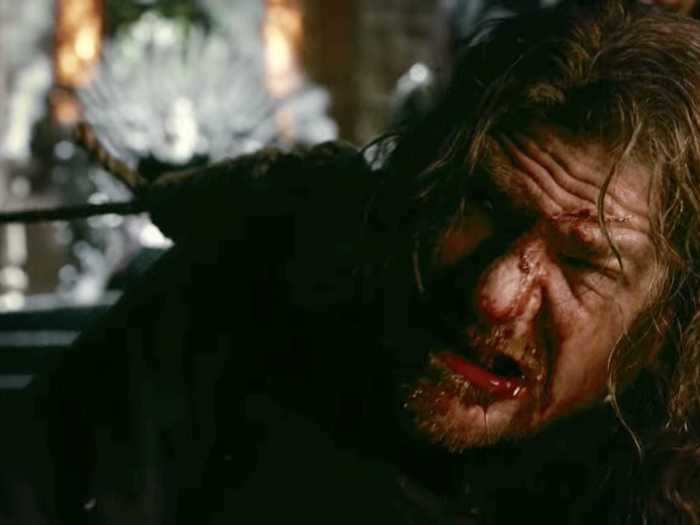
The first run of the pilot's feast scene included Jaime and Ned talking about the Mad King, Aerys II Targaryen, and how he executed Rickard and Brandon Stark.
Instead of cramming this into the pilot, Benioff and Weiss moved the exchange to the third episode of the season, "Lord Snow." That way when Ned and Jaime speak bitterly of the Mad King and Ned's father in the throne room, it helps contextualize the events of Robert's Rebellion.
Given how much of the first season of "Game of Thrones" relies on an unfolding understanding of Robert's Rebellion and the way it impacted our various lead characters (Ned, Cersei, Jaime, Catelyn, and Littlefinger, to name just a few), it's no surprise that Benioff and Weiss first tested out the possibility of using flashback scenes.
One of the most legendary aspects of the unseen pilot is a flashback scene that showed Ned's father and brother killed on the orders of the Mad King. A small flash of this scene made it into at least one of the early "Game of Thrones" promotional trailers released by HBO.
In the footage, which lasts barely a second, a man who looks an awful lot like Ned Stark is struggling against a rope tied around his neck. Blood covers his face, and he's clearly in anguish. In the blurred background of the shot we can see the Iron Throne and a blond king upon it.
Daenerys's wedding to Khal Drogo had to be totally redone thanks to the new casting, which mean George R.R. Martin's cameo was cut.
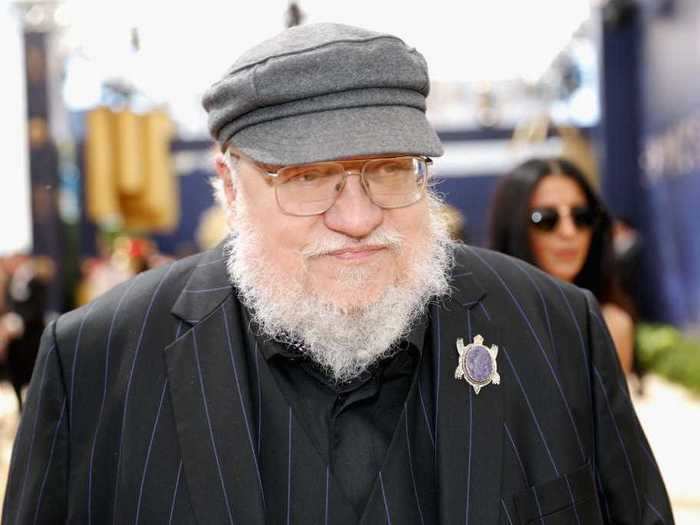
Author George R.R. Martin had made a cameo in the original version of this scene, which was filmed in Morocco. But the whole section, and therefore his cameo, was axed.
"It was, sad to say, left on the cutting-room floor," Martin said in a Daily Beast interview ahead of the first season premiere. "It was during Daenerys' wedding and I was a Pentoshi nobleman in the background, wearing a gigantic hat."
Though Benioff and Weiss planned on making it up to Martin by incorporating a new cameo into the fourth season, the appearance never happened.
Dany's whole wedding night was changed significantly from the books. Last year, George R. R. Martin said that the decision to have Daenerys sexually assaulted on her wedding night made the scene "worse" — but the reason for that change makes sense if you've read the books.
- Read more:
- George R. R. Martin says he wouldn't let HBO cut Rickon Stark from 'Game of Thrones' because he had 'important plans' for him
- Why 'Game of Thrones' may not have 'spoiled' the ending of George R. R. Martin's books as much as you think
- How 'Game of Thrones' nearly ended before it began thanks to a disastrous pilot
- 31 questions the 'Game of Thrones' series finale left unanswered
READ MORE ARTICLES ON
Popular Right Now
Popular Keywords
Advertisement